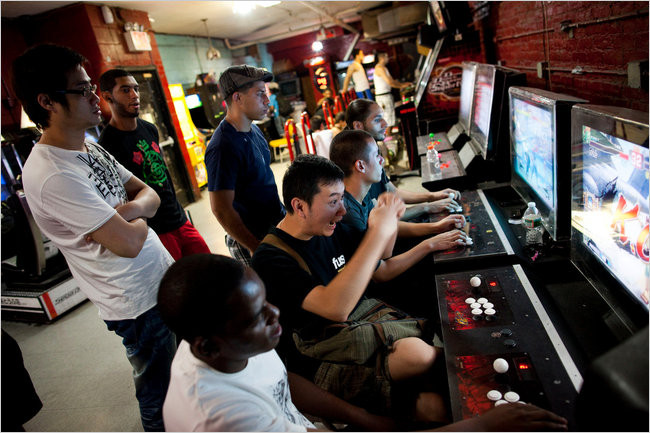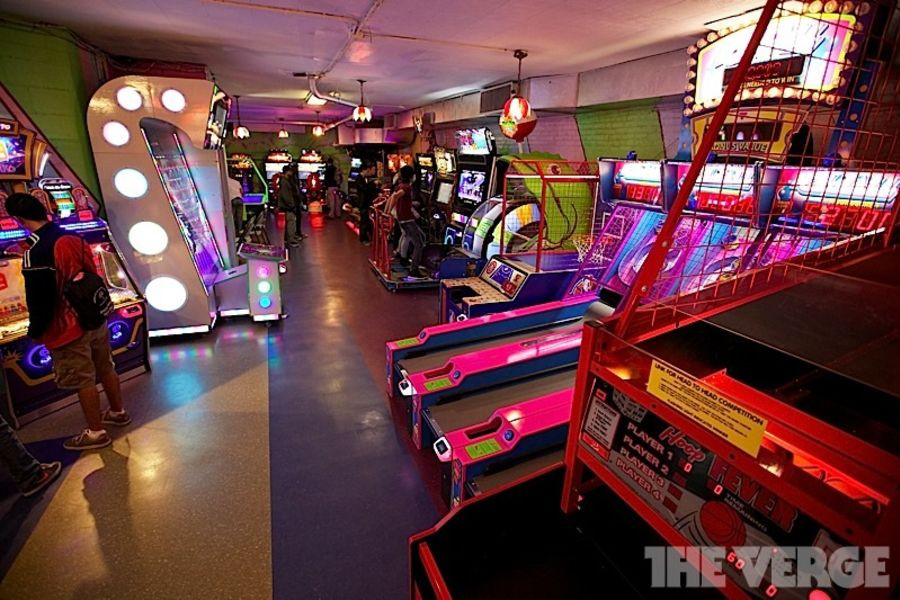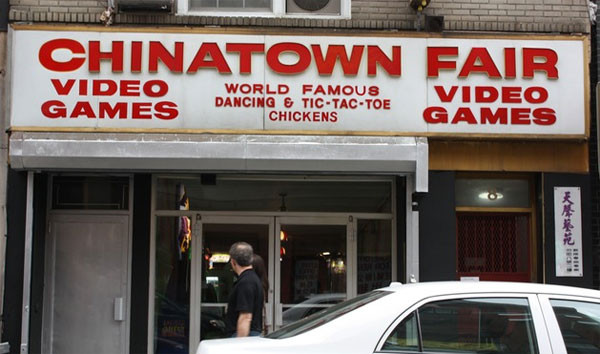Arcades, once vibrant hubs of entertainment, are becoming increasingly rare outside of Asia. Many have either faded away or transformed into generic family fun centers, filled with bright neon lights and the repetitive sounds of skee-ball. For those who grew up cherishing the unique atmosphere of arcades, this shift feels like a poignant, yet almost inevitable decline. The arcade market in many parts of the world has dwindled, overshadowed by the rise of home consoles and PC gaming, leaving little apparent reason for revival.
 This is what Chinatown Fair used to look like just a couple of years ago.
This is what Chinatown Fair used to look like just a couple of years ago.
The vibrant and bustling scene of Chinatown Fair a few years prior to its transformation, showcasing its classic arcade atmosphere.
However, a few steadfast locations have managed to persevere. Among these enduring spots, Chinatown Fair in New York City stood out for a long time. Nestled in the heart of Chinatown, this somewhat gritty, yet undeniably cool space offered a diverse selection of arcade games. It boasted modern favorites like Dance Dance Revolution (DDR), the latest fighting games, and a collection of timeless classics. Adding to its quirky charm was the legendary chicken, rumored to be a tic-tac-toe prodigy, as advertised on the sign above the entrance. (Though, admittedly, the tic-tac-toe playing chicken remained an elusive figure during personal visits.)
Chinatown Fair wasn’t known for its grandeur or pristine condition, but it possessed an authentic, underground appeal, particularly for enthusiasts of competitive fighting games. It was a place where you could test your skills, even if it meant enduring some colorful banter from the local gaming crowd. Yet, contrary to the stereotype, most people encountered were welcoming and friendly, adding to the unique social fabric of the arcade.
Unfortunately, last year marked a turning point as Chinatown Fair temporarily closed its doors due to a rent disagreement. Despite not being a significant profit-generator, it held a special place for a dedicated community, those eager to experience games like Street Fighter IV in an arcade setting even before its official North American release. For a while, it seemed Chinatown Fair might disappear completely, until new ownership emerged, promising to breathe new life into the beloved space.
Perhaps predictably, this revival came with significant changes. Gothamist and The Verge covered Chinatown Fair’s reopening, revealing the direction of its new iteration. Reports and photos from the soft-opening indicated a transformation towards a more conventional “arcade” experience, akin to those found in movie theaters or family entertainment centers.
The classic fighting games and many of the vintage stand-up arcade cabinets were gone. In their place were contemporary, family-oriented games like oversized basketball hoops, generic dance machines, and the prominently displayed Guitar Hero Arcade – a game often associated with higher earnings in modern venues.
Interestingly, the new owner, Lonnie Sobel, seemed to express genuine respect for the arcade’s history, rather than simply aiming for maximum profit. He mentioned that some of the older machines were undergoing refurbishment and were expected to return. He even specifically assured that fighting games would be reintroduced in the near future.
 This is that same section of the arcade today, as photographed by The Verge
This is that same section of the arcade today, as photographed by The Verge
A view of the same area in Chinatown Fair after its reopening, showcasing the shift towards more modern, family-friendly arcade games.
However, some of Sobel’s statements raised concerns among the arcade’s loyal fanbase. When questioned about the current absence of fighting games, Sobel stated, “The bottom line is, there’s just no really great fighting games out, so that’s why we don’t have any.”
This comment somewhat missed the point of Chinatown Fair’s appeal. For many, including myself, Chinatown Fair was the first place to truly experience Street Fighter IV in a competitive, social arcade setting. It was a vivid reminder of childhood arcade visits, a feeling that transcended the novelty of any specific game. While the latest games could draw initial crowds, the regulars were there for the diverse range of games available, including Neo Geo classics, vintage Marvel vs. Capcom titles, and lesser-known gems. People came to Chinatown Fair to play whatever unique arcade experience it offered.
Adding to the shift in focus, Sobel described the revamped Chinatown Fair as “a cross between Dave & Buster’s and Chuck E. Cheese.” This comparison, while not implying pizza and ball pits, clearly signaled a move towards a more broadly appealing, “family friendly” atmosphere.
There’s certainly a place for family-oriented entertainment venues. They are plentiful and popular, catering to those seeking token-earning games like skee-ball and prize redemption for fun trinkets. The issue is the growing scarcity of spaces catering to those seeking something beyond the typical family fun center experience.
Where can enthusiasts of dimly lit, slightly worn, yet authentically retro arcades go? Chinatown Fair was a rare sanctuary. It was a nostalgic throwback, offering an experience more akin to entering a clubhouse than a polished business establishment. Now, Chinatown Fair seems to have joined the ranks of standard family fun centers, potentially offering little more than the usual selection of contemporary arcade games.
 Goodnight, sweet chicken, wherever you may be. (Probably dead, actually.)
Goodnight, sweet chicken, wherever you may be. (Probably dead, actually.)
A symbolic farewell to the iconic chicken of Chinatown Fair, representing the passing of an era with the arcade’s transformation.
Perhaps it’s somewhat ironic to romanticize arcades in this day and age. The decline of arcades has been a long-predicted trend, rooted in economic realities. The traditional arcade model may no longer resonate with a mass audience – if it did, they likely wouldn’t have faced such a significant decline over the past decade. However, one might hope that in a city as diverse as New York City, there would always be room for a place as uniquely old-school as the original Chinatown Fair. A place that evoked the wonderful, slightly rough-around-the-edges charm of a bygone era.
The future evolution of Chinatown Fair under Sobel’s ownership remains to be seen. Perhaps he will indeed manage to blend the beloved classics with family-friendly attractions, preserving a piece of what made Chinatown Fair so special. However, one thing is clear: the Chinatown Fair that many cherished, the unapologetically retro arcade, is gone and likely not returning. The new Chinatown Fair Family Fun Center represents an evolution, catering to a broader audience, but inevitably leaving behind a part of its unique, nostalgic charm.


